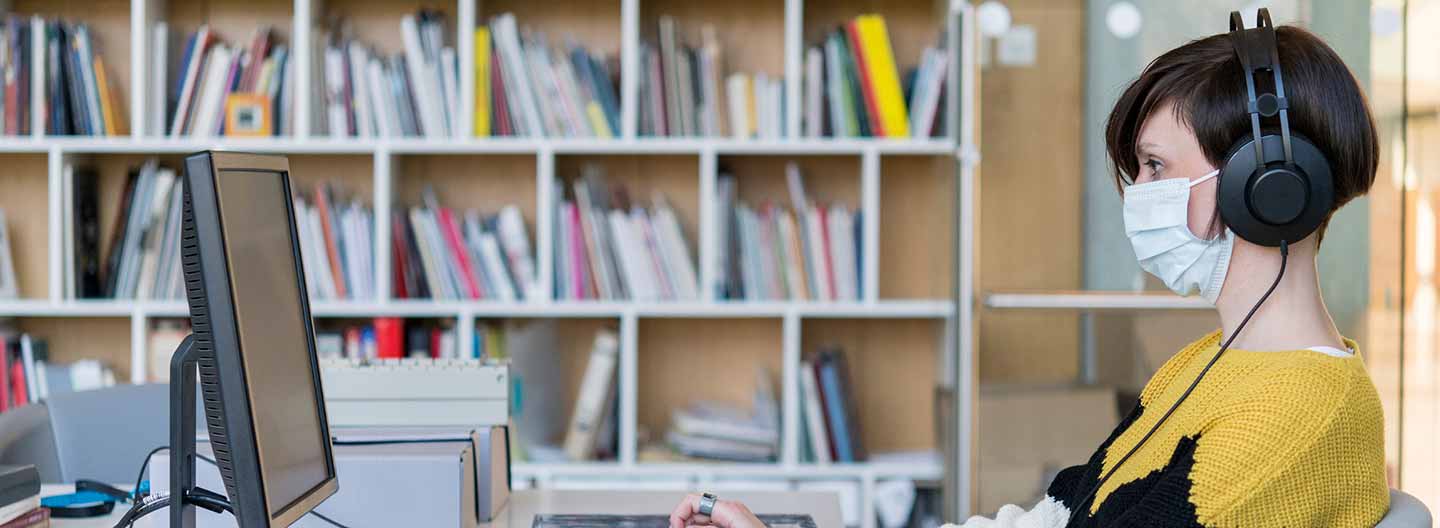It is so fun to look back over the past year to see how well we predicted the 2018 Library Tech Trends, plus all the unexpected things that popped up during the year. We didn't do too bad. Looking back over 2018, we cover the new DigitalLearn websites, cord cutting, the Internet of Things, artificial intelligence, translation technology, and the library of things.
DigitalLearn Websites
This new ALA-sponsored DigitalLearn.org project has created a robust suite of resources and tools for library staff and other educators to use for technology training in the community. A growing trend has been that a number of libraries have already created their own custom, branded DigitalLearn websites. They include Carnegie Library of Pittsburgh, Chicago Public Library, East Baton Rouge Parish Library, Kalamazoo Public Library, Nashville Public Library, Pima County Public Library in Arizona, and Topeka and Shawnee County Public Library in Kansas.
DigitalLearn.org covers 81 learning topics in areas such as hardware, software, and social media. These tools were originally developed as Gail's Toolkit, a project of the Gail Borden Public Library District in Elgin, Illinois, available on DigitalLearn's Tools and Resources for Trainers page. They include presentation slide templates, activity sheets, and other planning documents that make it easy for library training staff to teach computer and technology classes.
Cord Cutting
San Mateo County librarian Ginny Mies made a forecast in our Library Tech Trends for 2018 about the need for libraries to serve cord cutter patrons. Cord cutting is a trend that has been going on since 2010 in which people ditch their expensive cable TV or satellite contracts and get their entertainment via online streaming. Indeed, the forecast turned out to be prescient. Fortune magazine reported in March that cord cutting had become such a problem for cable companies that stock prices of Comcast and AT&T were down sharply by then. Ginny's library system is going beyond offering just Hoopla for streaming media to experimenting with lending GoChip Beams. These are devices that can hold five feature-length movies or an entire season of a TV series.
Pagosa Springs Public Library in Colorado has expanded its cord cutter offers with the nonprofit service Cloud Library for eBooks, audiobooks, and TV streaming in multiple languages, and also with IndieFlix for streaming independent films.
The Internet of Things in Libraries
Much of the sound and fury about the Internet of Things (IoT) seemed to simmer down this past year, but the trend is still very much upon us. The short definition of IoT from dictionary.com is "a network of everyday devices, appliances, and other objects equipped with computer chips and sensors that can collect and transmit data through the Internet."
Emerging trends writer David Lee King in August wrote a great summary called The Internet of Things and Libraries. Here are some ways libraries are already incorporating IoT technology into their libraries.
- Smart Building Technology: As libraries retrofit their buildings with newer technology (or build new buildings or branches), they are starting to see more IoT-based technology. For example, some libraries can can adjust heating, cooling, and lights from a smartphone app. Some newer building monitoring and security systems can be monitored via mobile apps.
- RFID: RFID technology (sensors in books) is a type of IoT technology that has been around for quite a while.
- Beacon Technology: There are at least two library-focused companies experimenting with Beacon technology: Capira Technologies and Bluubeam. Beacon technology provides patrons with library notifications on their cell phones like a self-guided virtual tour.
- People Counters: Check out Jason Griffey's Measure the Future project. Here's what he says about Measure the Future:
"Imagine having a Google-Analytics-style dashboard for your library building: number of visits, what patrons browsed, what parts of the library were busy during which parts of the day, and more. Measure the Future is working to make that happen by using open-hardware based sensors that can collect data about building usage that is now invisible. Making these invisible occurrences explicit will allow librarians to make strategic decisions that create more efficient and effective experiences for their patrons."
- Library Classes: Libraries are also teaching classes about the Internet of Things. These include classes focused on introducing patrons to IoT technology and classes that focus on an aspect of IoT, like a class on making things with Arduinos or how to use your new Fitbit.
One critical, but often overlooked, IoT thing we covered this year on TechSoup for libraries is the fact that our Internet connected copiers and multifunction printers store confidential patron information that can be hacked. The piece talks about what you can do about that security vulnerability.
MIT Technology Review's Picks for 2018
AI for Everybody
Every year, MIT Technology Review chooses 10 breakthrough technologies that will transform how we live and work. MIT's list for 2018 included artificial intelligence for everyone. Cloud-based AI is making the technology cheaper and easier to use. University of Rhode Island libraries associate professor Bohyun Ki forecast the coming of AI in libraries in our Top Tech Trends from the 2018 ALA Midwinter Conference piece in April.
Chatbots are clever little pieces of artificial intelligence that hold automated conversations with you on the web. They are particularly useful for pointing people to the right information. Find some examples of chatbots in a piece we did on TechSoup.org here. If you'd like to try out this form of AI, it actually isn't so difficult to build a Facebook Messenger chatbot for your library. Chatbots Magazine has a tutorial on how to do that.
For more information on how AI affects libraries in areas like information literacy, personal privacy, and intellectual freedom, check out Council Bluffs librarian Ben Johnson's Libraries in the Age of Artificial Intelligence in InfoToday.
Babel-Fish Earbuds and Translation Technology
MIT also picked Babel-fish earbuds — an actual Google product called Pixel Buds. Of course, who among us wouldn't notice the literary allusion to the late Douglas Adams' sci-fi classic The Hitchhiker's Guide to the Galaxy? We listed this as bleeding-edge tech last year, but it's ready for prime time now. These Pixel Buds work with Google Pixel smartphones and the Google Translate app to produce near-real-time translation for a large number of languages. They are easy to use and relatively affordable at $159.
Even without sci-fi translation earbuds, Google Translate and other apps have really matured. They are easy to use on a smartphone for circulation and reference desk workers who need to communicate with non-English speakers. For more on that, check out TechConnect's 6 Google Translate Tips You Need to Start Using.
MIT Technology Review has plenty more breakthrough technologies to ponder, like perfect online privacy that lets users reveal just what info is necessary using an emerging cryptographic protocol called a zero-knowledge proof. Too bad this one is still computation-heavy and slow. Maybe it'll be ready for libraries next year.
Library of Things
This might be my imagination, but I've spoken to so many librarians over this past year who have told me about the nontraditional things their libraries are now circulating. Is library of things a bona fide trend? It has certainly been going on a long time. Berkeley Public Library's Tool Lending Library was established in 1979.
What is fascinating to me is how tailored to the community these programs are. Pottsboro Library in rural Texas lends party furniture to serve its lake resort patrons. Oakland Library lends seismic retrofit tools for its patrons who live near the Hayward fault. Most librarians I've asked about this say that they lend crafting tools, home and yard equipment, musical instruments, and of course technology. GoPro cameras seem to be especially popular. See American Libraries magazine's fun infographic (PDF) of all the different library of things they've found. Find even more at the Library of Things Facebook page.
The 2018 I Love My Librarian Award Winners
Finally, a big congratulations to our 2018 ALA I Love My Librarian Award Winners:
- Ginny Norris Blackson of Central Washington University Library in Ellensburg, Washington
- Joy Lynn Bridwell of Stone Child College Library in Box Elder, Montana
- Tamara Lea Cox of Wren High School Library in Piedmont, South Carolina
- Nancy Lynn Daniel of Western Piedmont Community College Library in Morganton, North Carolina
- Jennifer Berg Gaither of Baltimore City College Library
- Terri Gallagher of Community College Library of Beaver County, Pennsylvania
- Stephanie H. Hartwell-Mandella of Katonah Village Library in New York
- Paula Kelly of Whitehall Public Library in Pittsburgh, Pennsylvania
- Dr. Linda E. Robinson of Mansfield Middle School Library in Mansfield, Connecticut
- Lindsey Tomsu of Algonquin Area Public Library District in Algonquin, Illinois
Goodreads Choice Awards for the Best Books of 2018
The Goodreads Choice Awards for 2018 are decided by readers. Over a quarter million of them voted this year. This is Goodreads' 10th annual edition. The awards go to books in 21 categories. Each category has 20 books that got the most votes, so there's lots to choose from. The Choice Awards website also lists the winners from previous years from 2009 on up. The book next on my list? That'd have to be the debut novel Fruit of the Drunken Tree by Ingrid Rojas Contreras. Can't wait.






